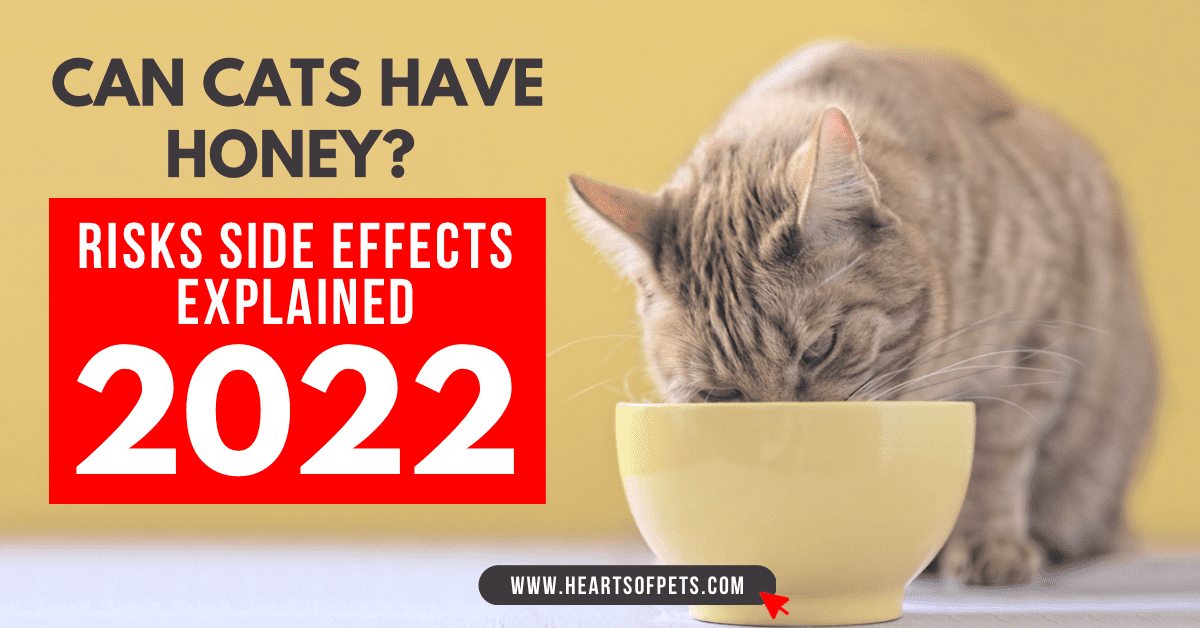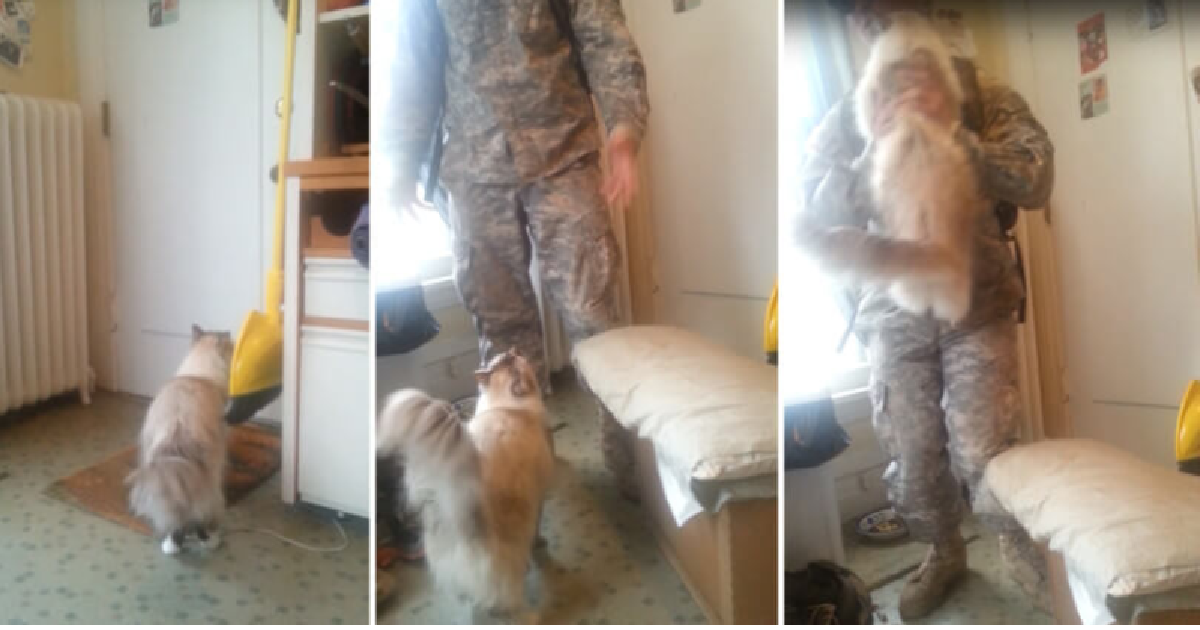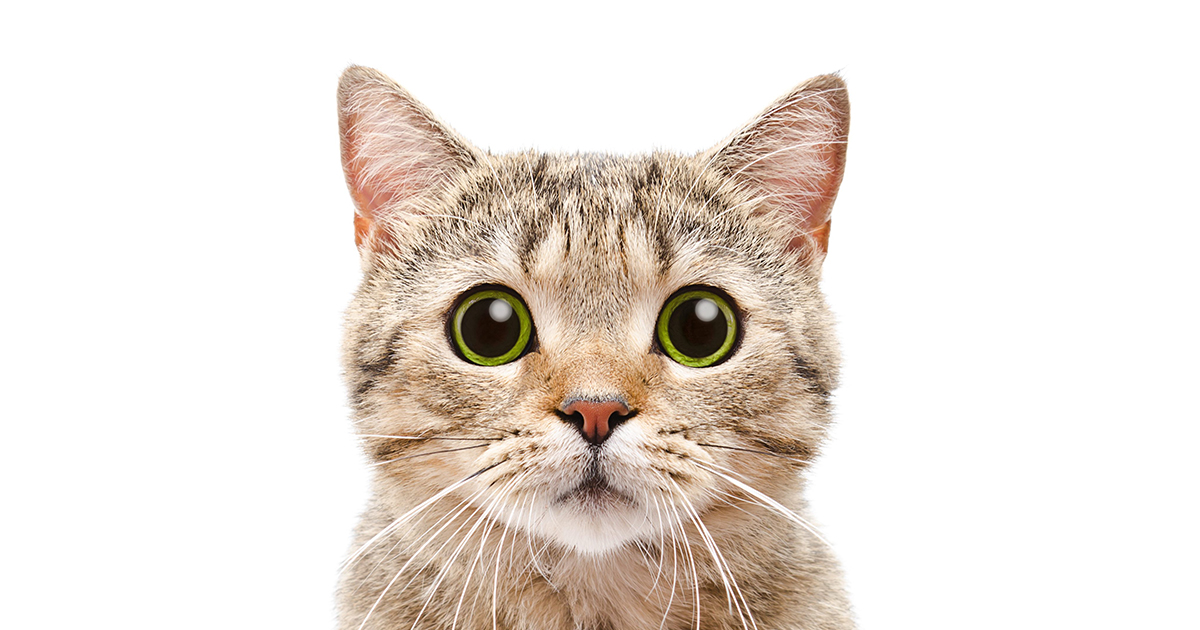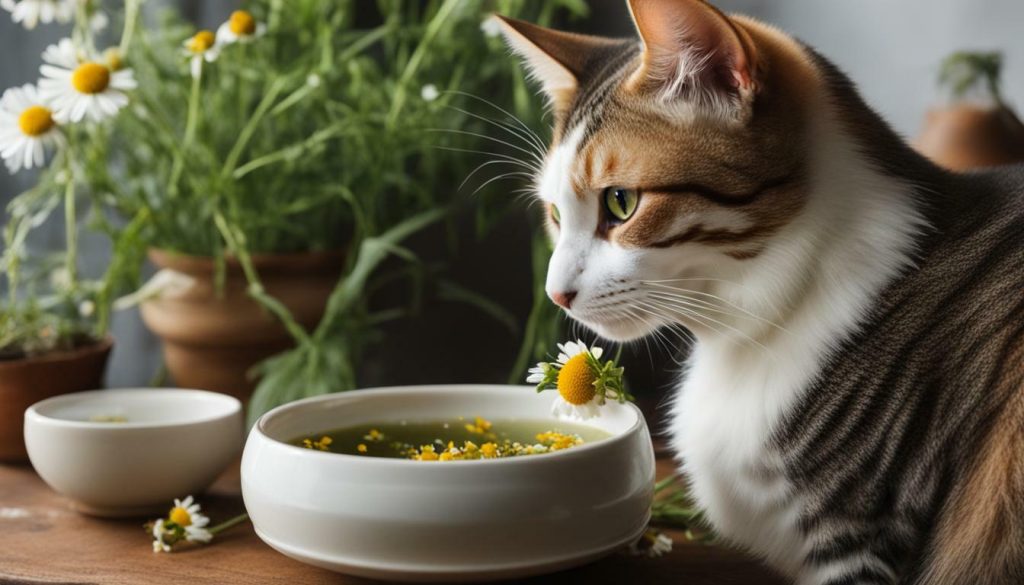
If your cat has an eye infection, it’s important to address it promptly to prevent further complications. In this section, we will provide a simple guide on treating your cat’s eye infection at home. We will discuss safe and effective solutions to help improve your feline friend’s health and comfort.
Key Takeaways:
- Look for symptoms of redness, swelling, discharge, and excessive rubbing of the eyes.
- Clean the discharge by gently using dampened cotton wool or a cotton ball soaked in cooled, boiled water.
- Trim long hair around the eyes and keep the cat’s face clean to prevent further irritation.
- If symptoms persist or worsen, consult a veterinarian for proper diagnosis and treatment.
- The vet may prescribe topical eye ointments or drops containing antibiotics for bacterial infections.
Recognizing Symptoms of Cat Eye Infection
Cat eye infections can manifest through various symptoms that can be observed and treated at home. It’s essential to keep an eye out for signs such as redness, swelling, discharge, and excessive rubbing of the eyes. These symptoms may indicate an infection, and early detection can help prevent further complications.
To address the issue at home, you can start by cleaning the discharge gently. Use a dampened cotton wool or a cotton ball soaked in cooled, boiled water to clean around your cat’s eyes. Be careful not to apply too much pressure or touch the eye directly. This simple cleaning routine can help reduce irritation and promote healing.
Another home remedy is to trim the cat’s long hair away from the eyes. Long hair can aggravate the infection and obstruct the cat’s vision. By keeping the hair around the eyes trimmed, you can improve your cat’s comfort and aid in the healing process.
If the symptoms persist or worsen despite these home remedies, it is advisable to consult a veterinarian. A professional diagnosis is crucial to determine the underlying cause of the infection and prescribe appropriate treatment. The veterinarian may recommend topical eye ointments or drops containing antibiotics to effectively treat bacterial infections and alleviate your cat’s discomfort.
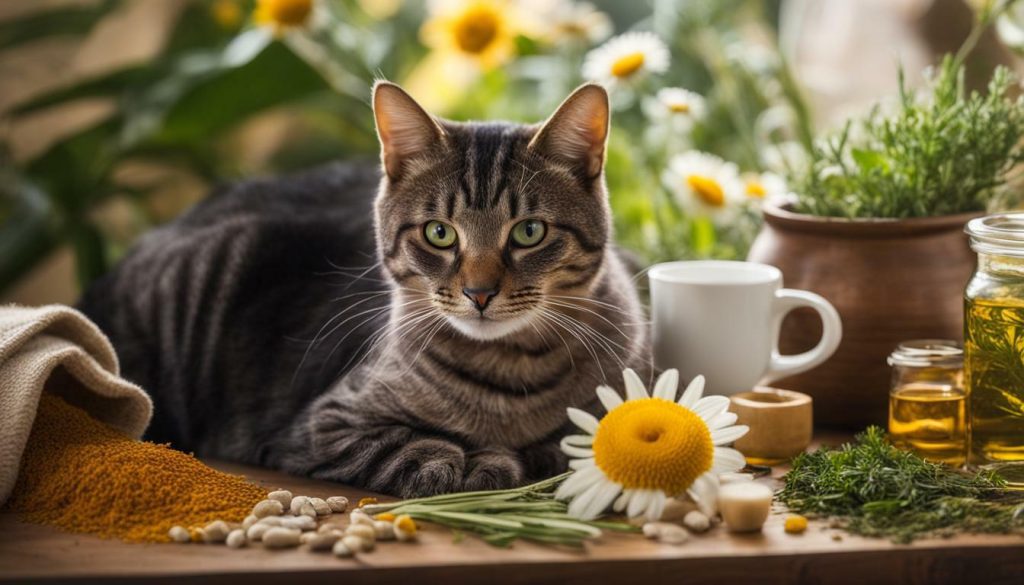
Remember, while home remedies can offer temporary relief, they are not a substitute for veterinary care. If you suspect your cat has an eye infection, it’s always best to seek professional advice to ensure proper treatment and prevent further complications.
Cleaning Discharge from the Eyes
Removing discharge from your cat’s eyes is an essential step in treating their eye infection at home. When left unattended, the buildup of discharge can lead to further discomfort and potentially worsen the infection. With gentle and proper cleaning, you can provide relief for your feline friend and promote healing.
To begin, make sure you have a soft and clean material, such as dampened cotton wool or a cotton ball soaked in cooled, boiled water. Gently hold your cat’s head with one hand and use the other hand to wipe away the discharge from the inner corner of their eyes, moving outward. Be careful not to touch their eyes directly, as this might cause additional irritation or injury.
Note: It’s important to use cooled, boiled water to minimize the risk of introducing any harmful bacteria or contaminants to your cat’s eyes. Avoid using tap water, as it may contain impurities that could further irritate the infection.
| Materials: | Instructions: |
|---|---|
| Soft cotton wool or cotton ball | Soak in cooled, boiled water |
| Towel or soft cloth | Pat dry after cleaning |
After cleaning the discharge, gently pat your cat’s face dry with a towel or soft cloth. This helps to remove any excess moisture and prevents further irritation. Remember to discard the used cotton wool or cotton ball, and wash your hands thoroughly to maintain hygiene.
Regular cleaning of discharge from your cat’s eyes can help alleviate discomfort and reduce the risk of complications. However, if the symptoms persist or worsen, it is crucial to seek veterinary assistance. A professional diagnosis will ensure appropriate treatment, which may include ointments or drops specifically formulated to combat bacterial infections.
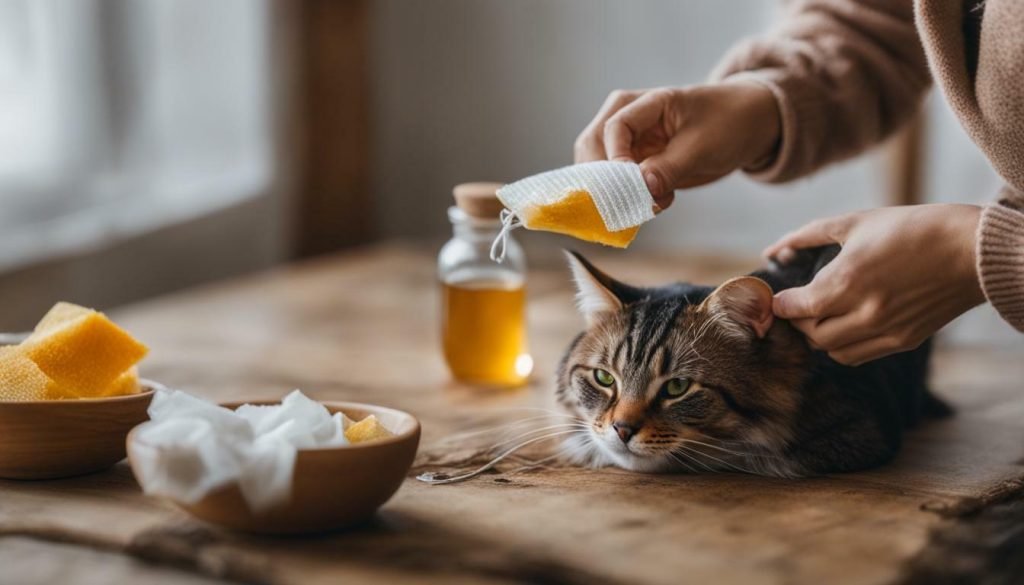
Creating a clean and comfortable environment is crucial for your cat’s eye infection treatment at home. Grooming plays a significant role in managing your cat’s eye health. Trim any long hair around the eyes carefully to prevent it from irritating the eyes or trapping debris. You can use small, blunt-tipped scissors designed for pet grooming. Remember to be gentle and cautious to avoid any accidents or injuries.
In addition to grooming, it’s essential to keep your cat’s face clean. Use a soft, dampened cotton wool or a cotton ball soaked in cooled, boiled water to gently wipe away any discharge or debris around the eyes. Start from the inner corner and move towards the outer edge. Avoid using harsh chemicals or substances that could further irritate your cat’s eyes.
Regularly cleaning your cat’s bedding, toys, and living area is equally important. Wash their bedding and any soft toys using unscented, mild detergent and dry them thoroughly. A clean environment helps minimize the risk of reinfection and promotes healing. Ensure that the litter box is scooped daily and cleaned regularly to maintain cleanliness.
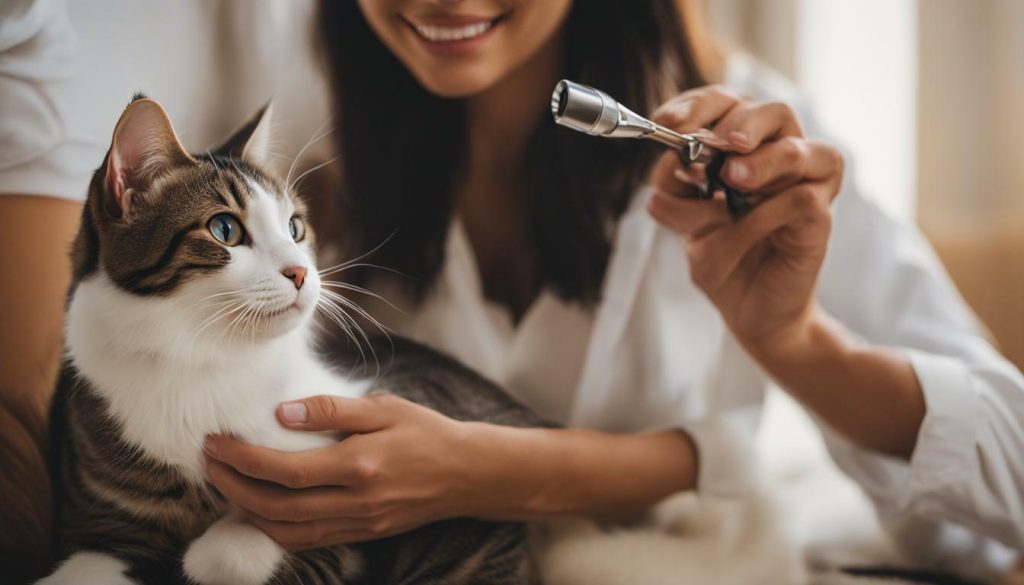
| At-home Care Tips for Cat Eye Infection |
|---|
| Keep your cat’s face clean by gently wiping away discharge with dampened cotton wool or a cotton ball soaked in cooled, boiled water. |
| Trim long hair around your cat’s eyes to prevent irritation and debris accumulation. |
| Regularly clean your cat’s bedding, toys, and living area to minimize the risk of reinfection. |
| Use unscented, mild detergent when washing your cat’s bedding and toys. |
| Ensure the litter box is scooped daily and cleaned regularly to maintain cleanliness. |
Quick Tip:
When cleaning your cat’s eyes, always use a fresh piece of cotton wool or a clean cotton ball for each eye to prevent cross-contamination and potential spread of the infection.
By adopting these at-home care practices, you can support your cat’s eye infection treatment and contribute to their overall comfort and well-being. However, if the symptoms persist or worsen despite your efforts, it is crucial to seek veterinary help. A professional diagnosis and appropriate treatment plan are essential to ensure your cat receives the necessary care for a speedy recovery.
When to Seek Veterinary Help
While home remedies may be effective in some cases, it’s essential to know when to involve a veterinarian for your cat’s eye infection. If you notice persistent or worsening symptoms such as redness, swelling, discharge, or your cat excessively rubbing its eyes, it’s time to seek professional help. A veterinarian will be able to provide a proper diagnosis and recommend the most appropriate treatment for your feline friend.
Eye infections in cats can be caused by various factors, including bacterial, viral, or fungal infections. Determining the underlying cause is crucial for effective treatment. Additionally, some symptoms may indicate a more serious underlying health issue that requires immediate attention. Therefore, it’s always advisable to consult a veterinarian to ensure the well-being of your cat.
Veterinarians have the knowledge and expertise to accurately diagnose the particular type and severity of the eye infection. They can then prescribe appropriate medications, such as topical eye ointments or drops containing antibiotics, to effectively treat bacterial infections. In some cases, they may recommend other treatments like antiviral or antifungal medications depending on the cause of the infection. Seeking veterinary help will ensure that your cat receives the best possible care and treatment, promoting a quicker recovery and minimizing any potential complications.
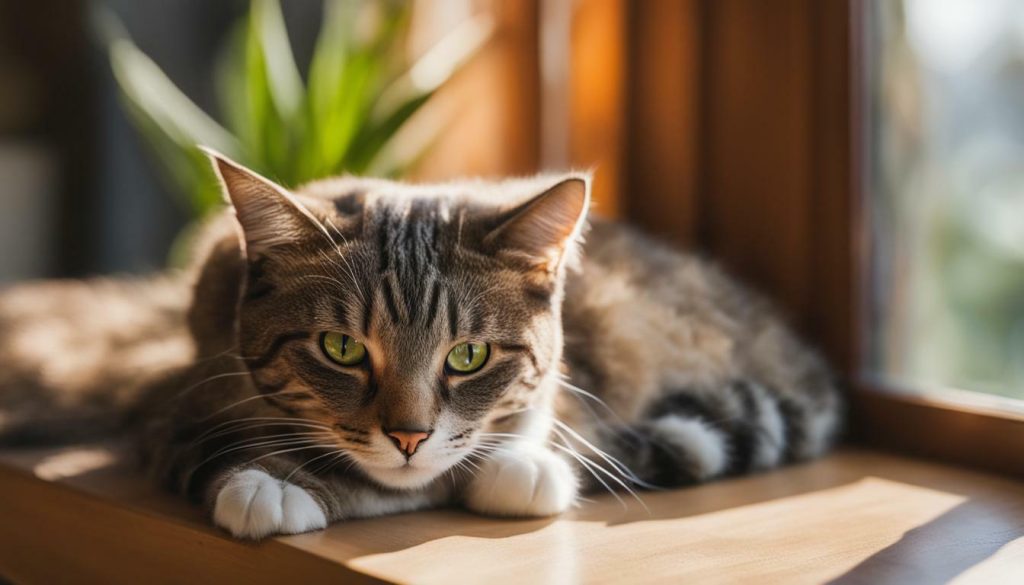
Remember, a holistic approach to treating your cat’s eye infection at home involves a combination of proper hygiene, regular grooming, and prompt veterinary intervention when necessary. By working closely with your veterinarian, you can ensure that your cat’s eye health is well-maintained and prevent future infections.
Offering a safe and comfortable environment for your cat, free from potential eye irritants, is crucial in preventing eye infections. Regularly cleaning your cat’s living space and keeping their face clean can significantly reduce the risk of future infections. Avoid using harsh chemicals or irritants near your cat’s eyes and ensure they have access to fresh water and a balanced diet to support their overall health.
Topical Treatments for Cat Eye Infection
Topical treatments play a vital role in managing and resolving cat eye infections at home. When treating your cat’s eye infection, it is important to look for symptoms such as redness, swelling, discharge, and rubbing of the eyes. These symptoms may indicate an underlying bacterial infection that requires immediate attention.
To effectively treat bacterial infections, your veterinarian may prescribe topical eye ointments or drops containing antibiotics. These medications are specifically formulated to target the infection and help alleviate your cat’s discomfort. It is important to follow the prescribed dosage and administration instructions provided by your veterinarian to ensure the best possible outcome.
When applying topical treatments to your cat’s eyes, it is essential to maintain cleanliness and hygiene. Before administering the medication, gently cleanse the affected area using a dampened cotton wool or a cotton ball soaked in cooled, boiled water. This will help remove any discharge or debris, allowing the medication to penetrate effectively.
Remember, while topical treatments can be effective in managing cat eye infections, it is crucial to closely monitor your cat’s condition. If the symptoms persist or worsen despite the treatment, it is recommended to seek veterinary help for a proper diagnosis and alternative treatment options.
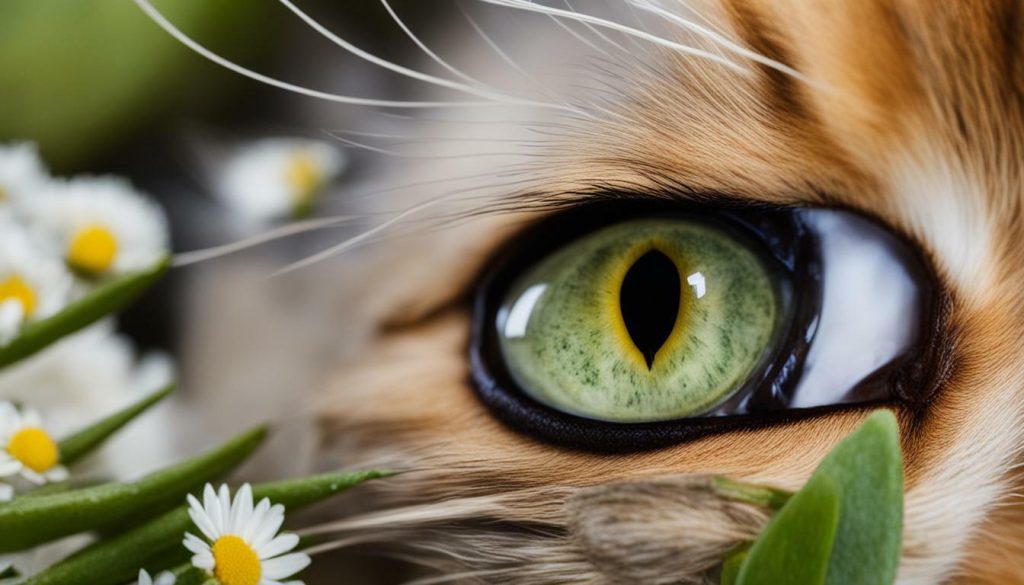
| Treatment Type | Description |
|---|---|
| Veterinary-prescribed eye ointments | This type of treatment contains antibiotics that target bacterial infections in the eyes |
| Veterinary-prescribed eye drops | These drops are specifically formulated to combat bacterial infections and reduce inflammation in the eyes |
| Administration | Administer the prescribed dosage as instructed by your veterinarian, typically by carefully applying the ointment or drops to the affected eye(s) |
| Hygiene | Prior to applying the medication, cleanse the affected area using a dampened cotton wool or a cotton ball soaked in cooled, boiled water |
Preventative Measures for Cat Eye Infections
Taking proactive steps to prevent cat eye infections can contribute to your cat’s overall eye health. By implementing simple at-home care routines, you can minimize the risk of your feline friend developing eye infections and ensure their eyes stay bright and healthy.
Regular grooming plays a crucial role in preventing cat eye infections. Trim away long hair around the eyes to reduce the chances of irritants getting trapped and causing infection. Keeping your cat’s face clean is equally important. Use a soft, dampened cotton wool or a cotton ball soaked in cooled, boiled water to gently wipe away any discharge or debris from their eyes.
Creating a clean environment is key to preventing eye infections in cats. Regularly clean their bedding, toys, and litter box to minimize the presence of bacteria or allergens that could potentially harm their eyes. Avoid using harsh chemicals or cleaning agents that may irritate their sensitive eyes.
| Preventative Measures for Cat Eye Infections |
|---|
| Regular grooming: Trim long hair around the eyes to prevent irritants from causing infection. Clean their face with a soft, dampened cotton wool or cotton ball soaked in cooled, boiled water. |
| Clean environment: Regularly clean their bedding, toys, and litter box to minimize the presence of harmful bacteria or allergens. Avoid using harsh chemicals. |
| Avoid irritants: Keep your cat away from smoke, dust, and other potential eye irritants. These can lead to inflammation and increase the risk of infection. |
| Promote a healthy diet: Provide your cat with a balanced diet rich in essential nutrients to support their immune system and overall eye health. |
Additionally, it’s crucial to keep your cat away from smoke, dust, and other potential eye irritants. These irritants can cause inflammation and increase the risk of infection. Ensure their living environment is well-ventilated and free from smoke or other airborne pollutants.
Promoting a healthy diet is another crucial aspect of preventing cat eye infections. A balanced diet rich in essential nutrients can support their immune system and overall eye health. Consult with your veterinarian to ensure your cat’s diet meets their specific nutritional needs.
By following these preventative measures and providing regular at-home care, you can help keep your cat’s eyes free from infection and maintain their optimal eye health.
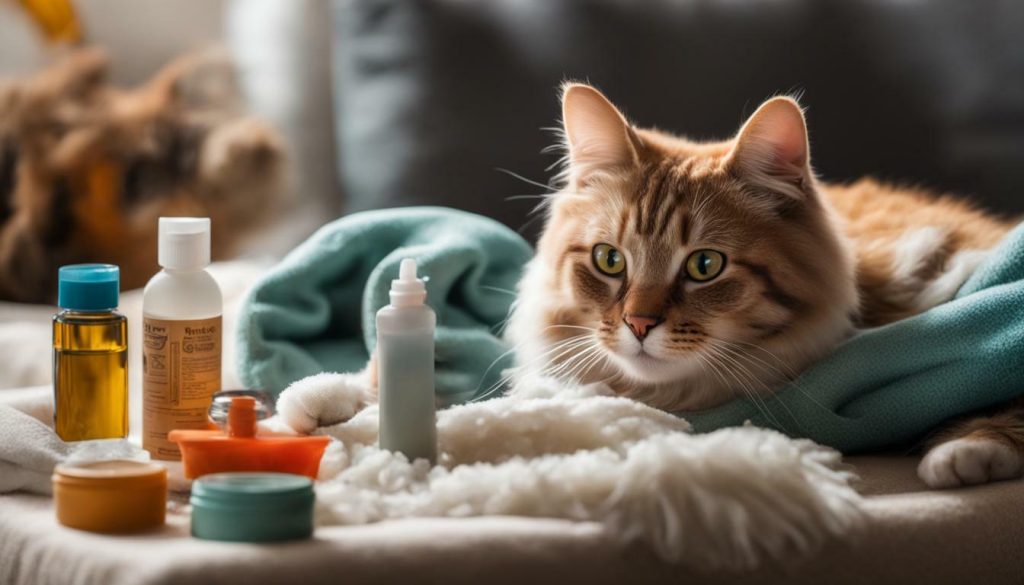
For those seeking alternative treatments, natural and homeopathic remedies can provide additional options for managing cat eye infections at home. These remedies focus on gentle, non-toxic methods to help alleviate symptoms and promote healing in your feline friend.
One natural remedy that has been found to be effective for cat eye infections is a saline solution. You can make your own saline solution by mixing one teaspoon of salt with one cup of distilled water. Use a clean dropper or syringe to apply the solution to your cat’s eyes, gently flushing out any debris or discharge. Saline solution can help soothe irritation and clear away bacteria, providing relief for your cat.
Additionally, herbal remedies such as chamomile tea can be used as an eye rinse. Brew a cup of chamomile tea and let it cool completely. Use a clean cloth or cotton ball soaked in the cooled tea to gently wipe your cat’s eyes. Chamomile has anti-inflammatory properties and can help reduce redness and swelling.
Table: Comparison of Natural and Homeopathic Remedies
| Remedy | Benefits | Usage |
|---|---|---|
| Saline Solution | Soothes irritation and clears bacteria | Apply with a dropper or syringe |
| Chamomile Tea | Reduces redness and swelling | Use as an eye rinse |
| Calendula Oil | Antibacterial and anti-inflammatory properties | Apply a few drops to the affected area |
It’s important to note that while natural and homeopathic remedies can provide relief for your cat’s eye infection, they should be used in conjunction with veterinary guidance and consultation. If your cat’s symptoms persist or worsen, it is crucial to seek professional advice for a proper diagnosis and treatment.
Overall, natural and homeopathic remedies offer alternative options for managing cat eye infections at home. These remedies can be used to supplement traditional treatments and help improve your cat’s comfort and well-being. Remember to always consult with your veterinarian before trying any new remedies or treatments.
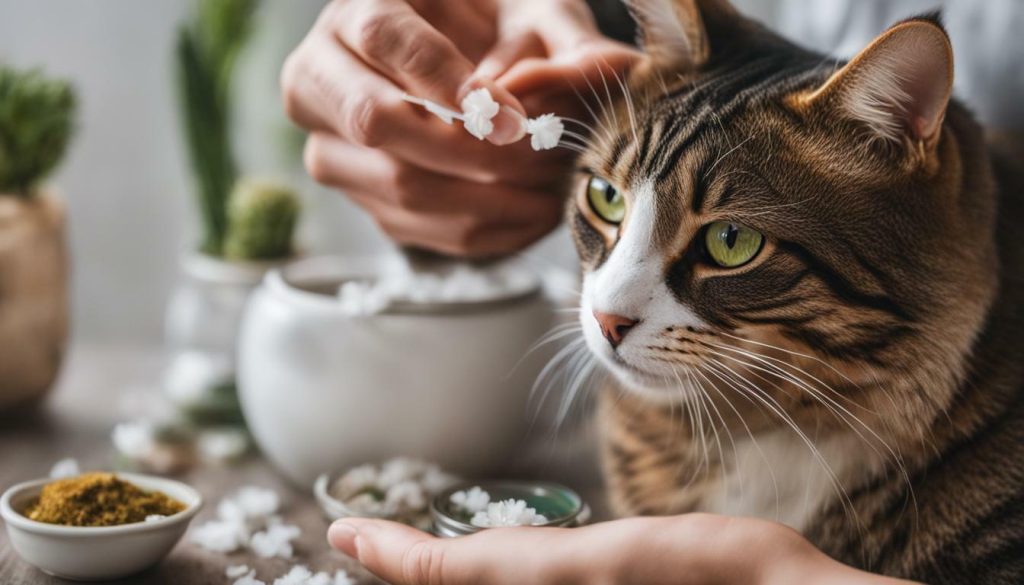
By following the tips and treatments outlined in this guide, you can effectively treat your cat’s eye infection at home and promote their overall well-being.
When treating your cat’s eye infection, it’s important to pay attention to symptoms such as redness, swelling, discharge, and excessive rubbing of the eyes. These may indicate an infection that requires immediate attention.
You can begin by gently cleaning the discharge from your cat’s eyes using dampened cotton wool or a cotton ball soaked in cooled, boiled water. This will help keep the affected area clean and prevent further irritation.
Additionally, trim any long hair around your cat’s eyes to minimize the risk of irritation. Regular grooming and cleanliness are crucial in managing and preventing eye infections in cats.
If your cat’s symptoms persist or worsen, it is recommended to seek veterinary help. A professional diagnosis is essential to determine the underlying cause of the eye infection and provide appropriate treatment.
Your veterinarian may prescribe topical eye ointments or drops containing antibiotics to effectively treat bacterial infections. These medications should be administered according to their instructions for the best results.
Remember, prevention is key in maintaining your cat’s eye health. Regular grooming, a clean environment, and avoiding eye irritants can significantly reduce the risk of future infections.
By staying vigilant and taking prompt action, you can ensure your feline friend’s eyes stay healthy and infection-free. Your cat will thank you for your care and attention!
FAQ
What are the symptoms of a cat eye infection?
Symptoms of a cat eye infection may include redness, swelling, discharge, and excessive rubbing of the eyes.
How can I clean discharge from my cat’s eyes?
You can clean discharge from your cat’s eyes by using dampened cotton wool or a cotton ball soaked in cooled, boiled water. Gently cleanse the affected area with these materials.
How should I groom my cat to help with their eye infection?
To help with your cat’s eye infection, trim long hair away from their eyes and keep their face clean to prevent further irritation.
When should I seek veterinary help for my cat’s eye infection?
It is recommended to seek veterinary help if your cat’s eye infection symptoms persist or worsen, as a professional diagnosis and treatment may be necessary.
What are topical treatments for cat eye infections?
Topical treatments for cat eye infections include veterinary-prescribed eye ointments or drops containing antibiotics to effectively treat bacterial infections.
How can I prevent future cat eye infections?
To prevent future cat eye infections, practice regular grooming, maintain cleanliness in your cat’s environment, and avoid eye irritants.
Are there natural and homeopathic remedies for cat eye infections?
Yes, there are natural and homeopathic remedies that may help alleviate symptoms and promote healing, using gentle and non-toxic methods.

